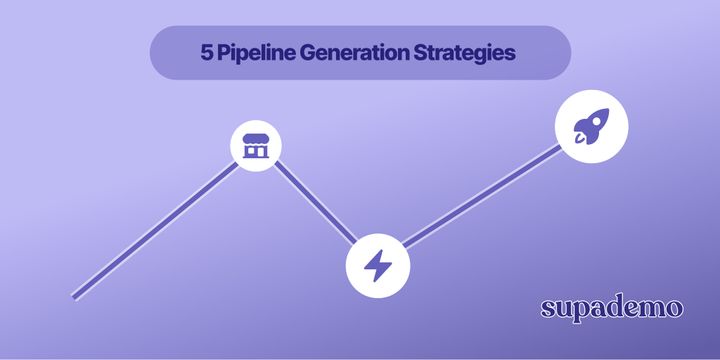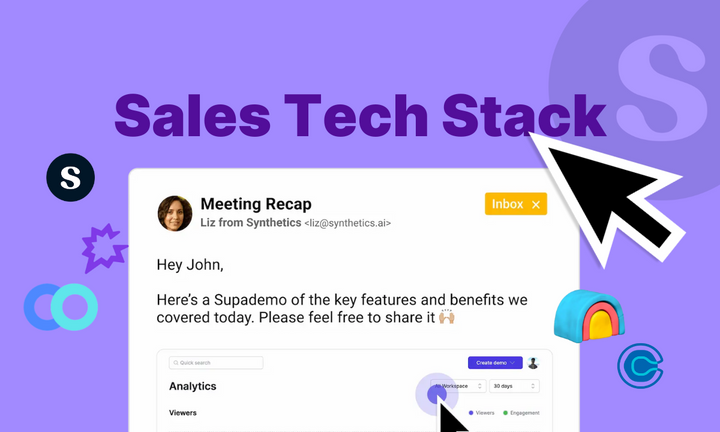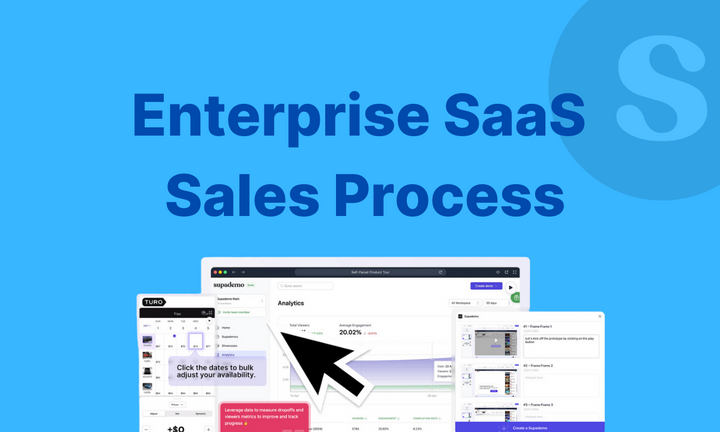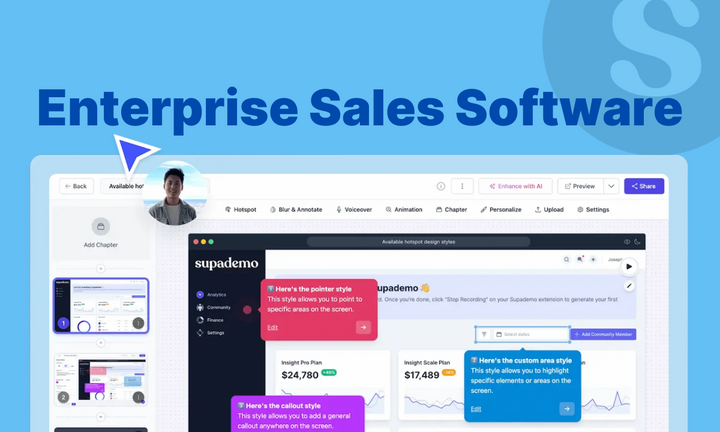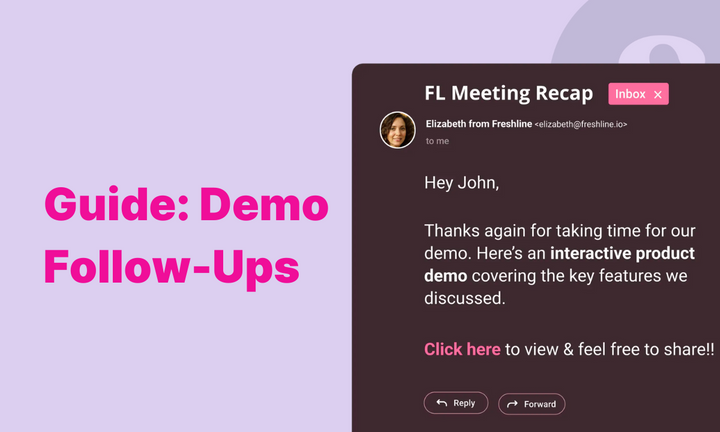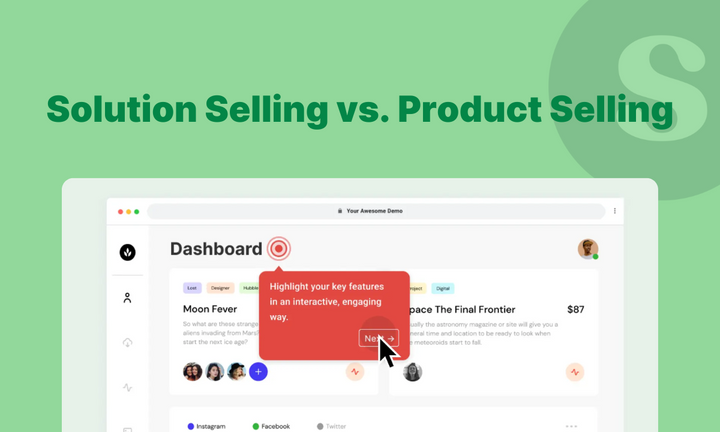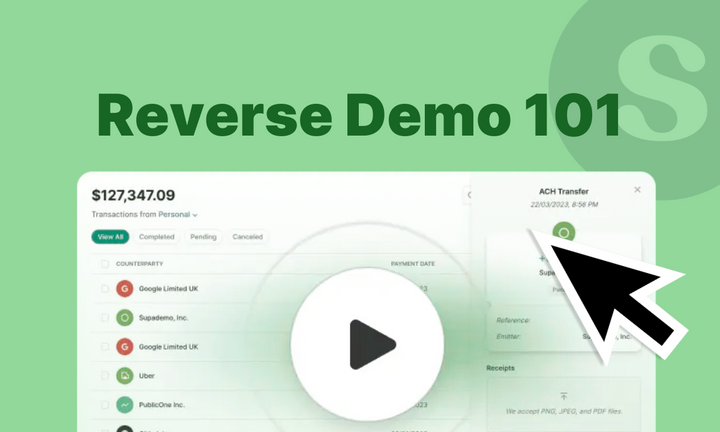If you're a sales or marketing professional, you've probably heard these common sales statements:
- A higher number of leads would lead to more revenue;
- B2B buyers go through a linear buying process;
- Only sales development representatives (SDRs) should be responsible for driving leads and pipeline;
Despite these assertions being thrown at you, chances are, you still grapple with a long list of low-quality queues of leads. It's clear statements like the above aren't the holy grail of building robust pipeline. And as a result, you might be grappling with a constant, looming concern about insufficient leads, converting them, or forecasting future revenue.
Luckily, these types of uncertainties can be solved through an effective pipeline generation strategy. When done right, this strategy brings in a steady flow of potential deals and improves your ability to anticipate and handle the uncertainties that lie ahead.
In this guide, we will walk you through the key strategies for building and maintaining a healthy pipeline. But before we proceed, there are a few key terms and distinctions to note.
What is Pipeline Generation?
Pipeline generation involves identifying, building, engaging, and nurturing a database of potential customers. An effective pipeline ensures a steady flow of prospects to keep your business afloat and helps you meet your quotas and revenue goals.
It's an essential part of the sales journey – from discovery to close.
Ultimately, generating a healthy and well-managed pipeline involves both sales and marketing teams, along with a combination of inbound and outbound efforts.
Pipeline Generation vs. Sales Pipeline vs. Lead Generation
Determining whether pipeline generation is the same as a sales pipeline or lead gen can be confusing as there are overlapping differences between these terms.
All three terms are interconnected and are essential in moving the needle forward when achieving your business goals.
Generating a pipeline is an ongoing effort and falls under a long-term strategy for business growth. Without a solid pipeline, you cannot have a predictable source of revenue.
Importance of Pipeline Generation
If you’re reading this, you are likely convinced that a solid pipeline is vital to moving the needle in your sales efforts. In fact, according to recent studies, 72% of organizations cite improving their pipeline creation as one of their top priorities.
This emphasis in the pipeline generation process is not just about having countless leads—it's about having suitable leads that can develop into revenue opportunities.
Let's delve into why a solid and healthy sales pipeline is essential for any business looking to thrive in competitive markets:
1. Ensures consistent and predictable revenue growth
A well-managed pipeline means businesses can confidently forecast revenue numbers for a given period. A deeper look into the number of qualified leads, their funnel stage, and intent to convert makes it easier to forecast the revenue targets that team will be able to meet.
And if there are gaps, companies can quickly and proactively deploy strategies and tactics to mitigate stalling growth, instead of being reactive. In addition:
- It helps present a solid case for stakeholders during meetings, ensuring decision-making is a breeze.
- It allows sales leaders to plan and ensure they have the resources to quickly close an estimated number of deals.
- It helps the marketing team get a granular view of their sources and plan accordingly.
2. Helps you make data-driven decisions
Both sales and marketing leaders benefit from a pipeline brimming with qualified leads. With valuable lead conversion rates, sales cycle lengths data, and marketing tactics performance, CSOs and CMOs can identify bottlenecks and improve their strategies.

For example, SDRs might see a drop-off in conversions at a specific stage and tailor their nurturing efforts to better target prospects. Marketing teams might realize that leads generated through a particular nurturing email sequence are converting 2x better than the norm, so they can invest more of their efforts in improving that sequence or creating a new one.
Challenges in Generating a Healthy Pipeline
Pipeline generation is paramount to the success of any B2B company, but doing this effectively is not a walk in the park. CMOs and sales leaders often face challenges in generating a consistent stream of qualified pipelines.
Some of the most notable challenges that prevent effective pipeline generation include:
- Poorly defined customer persona;
- High levels of marketing competition;
- Lack of adequate technolologies and workflows;
- Non-linear buying journey;
Let's dive into some of these challenges in more detail:
1. Poorly defined customer persona
One of the most common challenges is an unclear and vague description of who marketing and sales should target (aka your customer persona).
The Marketing team might create content, ads, and promotional materials that don't resonate with any particular audience. With an ambiguous definition, it is natural that the marketing team relays unqualified leads — people who might not have the intent, purchasing power or decision-making authority.
Without this clarity, the sales team might spend too much time on leads less likely to convert, overlooking more promising prospects.
2. High level of competition from the market
With the B2B market becoming overcrowded with each passing day, teams undoubtedly need help generating high-quality leads. Buyers might take longer to decide as they revisit and re-evaluate their decisions, potentially stalling your pipeline.
Additionally, competitors vying for the same leads might resort to tactics such as lowering their prices, making it difficult for you to justify your pricing during sales calls or demos. All of these factors combine to create increased competitiveness the top challenge faced by 58% of SDRs.
3. Lack of adequate technology
Not having the correct customer relationship management (CRM) software, sales forecasting tools, email outreach tools, etc., puts extra work and pressure on the team to do tasks manually. This time-consuming approach removes their focus from essential tasks such as strong relationship building or lead nurturing.

Additionally, without a central platform to get a 360-degree view of the pipeline, data gets scattered across multiple sheets and software, leading to the loss of potential nurturing and conversion opportunities.
4. Non-linear buying journey
B2B sales no longer take place in a predictable, linear journey. Gartner's non-linear B2B buying map highlights how buyers move between different steps non-sequentially but simultaneously. They might be exploring the solution during their research but decided to re-evaluate their problem. Not only does such back-and-forth delay pipeline generation, but it also makes it challenging to understand buyers' behaviour and meet them where they're on the journey.
Strategies for Effective Pipeline Generation
Building a healthy pipeline is a team effort. It demands ongoing collaboration between marketing and sales leaders. Neither SDRs can fill the pipeline with high-converting leads merely through demos or battle cards, nor can marketing exponentially increase the pipeline through lead magnets.
With input from both teams, your business can develop effective strategies to build a healthy and growing pipeline:
1. Record the pipeline contribution by source
There is no set path for incoming leads. Potential buyers can come from different sources, and if you have a solid understanding of these sources, you will have the vast opportunity to persuade them.
To resolve this, identify and track the pipeline gendered through various sources—inbound, outbound, self-sourcing (referrals), Account Executives (AEs), and advertising efforts. With such data points, it's easier to understand which source brings in more leads, allowing you to double down on those sources.
Jeremey Donovan, EVP of Revenue Operations and Strategy at Insight Partners, also highlighted the importance of delving into granular details, such as whether several leads come via inbound and which channel contributes the most—rich, owned events or webinar signups.
When you have this data, analyze it.
- Get on meetings to discuss the significant source of pipeline generation
- Identify tactics to increase efforts in your highest pipeline-generating source source
- Circulate insights and data pointed to feed your strategy meetings
He also emphasized the importance of involving the right people in the room at the correct times, discussing the right things, inspecting the right things, and challenging each other. Along with that, it is also essential to keep the right team accountable for related activities.
2. Focus on selling to a group, not an individual
We've established that a B2B buyer doesn't go through a horizontal journey. Instead, she goes in a loop, jumping back and forth between various stages. This journey becomes even more complicated with the involvement of 5 to 6 people. You will miss five potential opportunities if you only chase a single lead.

The shift of mindset from selling to an individual to a group calls for aligning marketing and sales efforts. The marketing team works on campaigns to target multiple buying group members from the same company and qualify them based on their interaction, intent, and influence level in the decision.
On the other hand, sales can focus on accessing 5-6 opportunities from a single company. So, have a group selling mindset while looking for new deals.
3. Adopt a buyer-first approach to selling
Along with a non-linear buying journey, 66% of B2B buyers prefer a rep-free sales experience.
In an environment where buyers want to be in control, you cannot sell to them with the traditional demo first signup later approach. They don’t even demand an SDR involvement until later in the journey. So, buyers need to see your product’s value prop without any external influences (your SDRs or marketing team) early in the journey.
Interactive product demos are the key to building trust and influencing decision-making when a buyer is in the early stages of their journey. These demos are self-paced and give the control in the buyer's hand. They can learn about your product’s offering through a live clickable demo.

Moreover, these demos help emphasize our point about selling to a group or the whole company. You can build multiple demos showcasing various use cases to target each prospect in that group, depending on their preferences and needs.
This scalable approach helps you meet buyers where they are and engage them with your product. Here's how an interactive demo works:
4. Spot your champions at different stages
To build a pipeline of highly interested individuals, focus on identifying and encouraging your champions. Champions are the influential people in an organization who understand your product's value, can identify potential growth opportunities and have the authority to persuade critical decision-makers.
For example, if you're selling a new technology such as demo automation and, through your conversation with one of the SDRs, you realize their enthusiasm and interest in your product and how it solves their pain point, that SDR is your champion who can help you spread the word by demonstrating how helpful the tech is in reducing their manual work.
To increase open rates and conversions even more, you can use strategies like dynamic personalization to tailor your demos or follow-ups for your specific champion, decision-maker, or company.

During Clari's Charge Event, the panel discussed two approaches to identifying good champions during early and mid-stage pipeline generation.
For instance, if you're discussing with the sales director, ask them questions that involve the perspective of their boss, like the Chief Revenue Officer. A good champion will confidently discuss these higher-level viewpoints.
Learn how well-versed the champion is with the company's internal processes, including legal and financial procedures that might affect your deal. They might not be the right champion for your deal if they seem vague or unsure about these processes.
By identifying the right champion, you can get in front of the right people and close deals.
5. Incentivize your customers to sell for you
Most buying decisions are based on customer reviews, testimonials, and feedback from current and new users. These words are more trustworthy and persuasive as they come from a first-person perspective and are often unfiltered. On Youryal, customers would also know about your product if they found their Aha! Moment and had a fantastic experience using the product and also with your team.
Liam Cannon, VP of Marketing at Rise People, suggested developing a customer advocacy program. When your customers advocate for your product, it has a much higher impact on your pipeline—not only the pipeline but also opportunities with a higher close rate.

He proposed developing a customer advocacy program, such as a customer referral program. In this program, your current client gets paid per referral, or you can set up a retainer so they can create content with you every month. And help promote this program via LinkedIn, Slack communities, events, etc.
Use Interactive Demos for Effective Pipeline Generation
The most crucial element to a successful pipeline generation strategy is the collaboration and understanding between CMOs and CSOs. If both parties run their show to meet their numbers without inviting healthy discussions from different team members, it's a recipe for disaster.
There will be unmet targets, inconsistency in brand messaging, lack of trust among potential customers, and limited growth opportunities. So, start working with your internal team more transparently to resolve the current challenges and build a pipeline of high-converting prospects.

To fill your pipeline with product-qualified prospects (leads familiar with the product and ready to buy) through demo automation. Supademo, an interactive demo platform, helps you quickly build and share clickable product demos at scale. From prospecting to closing the deal, you can make your prospects their own guide by showing your product's value upfront.
Give it a try by building your first five demos for free. Sign up here.


